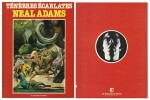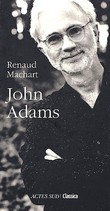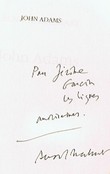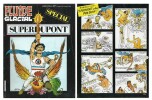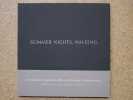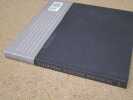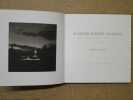857 books for « adams d »Edit
-
Type
Book (845)
Magazine (2)
Music sheets (10)
-
Latest
Last 3 days (1)
Last month (9)
Last week (1)
-
Language
English (6)
French (844)
Russian (7)
-
Century
17th (1)
18th (5)
19th (24)
20th (441)
21st (93)
-
Countries
Belgium (37)
Canada (4)
Côte d'Ivoire (3)
Denmark (13)
France (724)
Italy (1)
Switzerland (64)
United Kingdom (4)
United States of America (7)
-
Syndicate
ALAC (4)
CLAM (1)
CLAQ (2)
ILAB (446)
NVVA (8)
SLACES (8)
SLAM (411)
Topics
- Adams ansel (5)
- Adams clifton (26)
- Adams gerry (5)
- Adams john (6)
- Africa (2)
- Architecture (10)
- Armenia (2)
- Astrology (24)
- Astronomy (3)
- Astrophysics (2)
- Berlin (2)
- Bible (4)
- Biography (5)
- Boston (2)
- Botany (2)
- Canada (4)
- Chartres (2)
- Children’s books (6)
- Cinema (5)
- Comic strip (25)
- Detective novels (34)
- Early printed books (2)
- Earth (3)
- Economics (3)
- Education (4)
- Egypt (3)
- Electricity (2)
- Engines (3)
- England (3)
- English (30)
- Esotericism (7)
- Ethic (2)
- Ethnology (3)
- Fantasy (5)
- Fine arts (4)
- First edition (20)
- Fox (3)
- Gardens (5)
- Geography (5)
- Geology (2)
- Georgia (3)
- Germanic languages (2)
- Hackney (10)
- Helvética (2)
- History (20)
- Humour anecdotes (2)
- Industrial arts & crafts - fine arts (5)
- Italian (3)
- Japan (6)
- Jeanjean marcel (13)
- Language (3)
- Linguistics (3)
- Literature (64)
- Marilyn (6)
- Mechanics (2)
- Medicine (2)
- Middle ages (2)
- Miller (3)
- Mines & miners (3)
- Navy (5)
- New-york (2)
- Oceania (2)
- Painters (3)
- Painting (3)
- Palaeontology (2)
- Philology (5)
- Philosophy (11)
- Photography (12)
- Poetry (6)
- Policy (3)
- Posters (2)
- Psychology (3)
- Religions (4)
- Reliure (2)
- Review (4)
- Reviews (2)
- Ruth (8)
- Science fiction (5)
- Sciences (4)
- Sciences & technique (2)
- Scores (12)
- Scout (3)
- Simons (2)
- Sociology (3)
- Songs (8)
- Sports (2)
- Spying (5)
- Switzerland (4)
- Sword (3)
- Theology (5)
- Travel (4)
- United kingdom (3)
- United states (4)
- Various (5)
- War (7)
- Western (4)
- Yoga (7)
The Action of Light on Selenium. Received May 18, - Read June 15, 1876. - [INVENTING THE SOLAR CELL]
(London, Harrison and Sons, 1878). 4to. No wrappers as extracted from ""Philosophical Transactions"" 1877 - Vol. 167. Pp. 313-349.
First appearance of Adams and Day's landmark paper, in which they demonstrated that electricity could be produced from light without moving parts, eventually leading to the modern solar cell. It is here that Adams shows for the first time that the discovery of Willoughby Smith - that the conductivity of selenium is due only to the effect of light - is correct and furthermore that light has an effect on the resistance of selenium and that light generates electrical currents in selenium. Two years later Adams expanded the work and published 'Solar Heat'. Here he described his ""Power Tower Concept"", which to this day remains the basis of solar plants.William Grylls Adams (1836 - 1915), professor of Natural Philosophy at King's College, London, and brother of the famous astronomer John Couch Adams (1819-1892), was President of the Physical Society of London from 1878 to 1880. In 1872 he was elected a Fellow of the Royal Society and in 1875 delivered their Bakerian Lecture. He was president of the Institute of Electrical Engineers and of the mathematical and physical section of the British Association.His greatest achievement lies in demonstrating the seminal discovery that electricity could be produced from light without moving parts. The road to this discovery was begun in 1839 when Becquerel discovered that illumination of one of two metal plates in a dilute acid changed the electromotive force. Another French scientist, Auguste Mouchout, followed up on Becquerel's discovery, but it was not until 1876, when Adams and Richard Evans Day discovered that illuminating a junction between selenium and platinum has a photovoltaic effect, that the foundation for the documented use of solar thermal power was laid [with the publication of the present paper]. ""From a historical viewpoint, it is of interest to note that the first experiments on the generation of solar thermal power in India were conducted by an Englishman, William Adams, about one hundred years ago. Adams stayed in Coloba, Mumbai and performed his experiments in the compound of his bungalow. He used a sphecical reflector 12 m in diameter, made from sheets of glass mirror. The sun's rays were focussed on a boiler having a capacity of about 60 litres and the steam generated was used to drive a 2.5 HP steam pump. Adams's work is described in a book written by him entitled ""Solar Heat - A Substitute for Fuel in Tropical Countries for Heating Steam Boilers and Other Purposes"" (Education Society's Press, Byculla, Bombay, 1878)."" (Sukhatme & Neyak, ""Solar Energy. Principles of Thermal Collection and Storage"", p. 48)""William Grylls Adams was and English scientist who taught as a professor in the department of Natural Philosophy at King's College. He is notable for his contribution to the discovery of the photoelectric effect, on which all solar energy applications are based. He was inspired by Auguste Mouchout's invention of the solar steam engine. With the intent of making improvements to Mouchot's design, Adams began to experiment with different materials and designs. In 1876, working in conjunction with his student, Richard Day, he discovered that selenium produced electricity when exposed to sunlight. Using the selenium, he then added mirrors to the design to concentrate sunlight on the engine. This design came to be known as the power tower concept and is still in use today."" (Smith & Taylor, ""Renewable and Alternative Energy resources: A Reference Handbook"", 2008, pp. 1556-56).Wheeler Gift, No. 3856. - Shiers ""Early Televison"", no. 73.
The Action of Light on Selenium. Received May 18, - Read June 15, 1876. - [INVENTING THE SOLAR CELL]
(London, Harrison and Sons, 1878). 4to. In the original wrappers. Offprint from ""Philosophical Transactions"" 1877 - Vol. 167. Author and title written in light pencil to front wrapper. Wrappers with a bit of soiling and part of spine is missing. Corners bended. Internally fine and clean. Pp. 313-349.
First edition, in the extremely rare offprint, of Adams and Day's landmark paper, in which they demonstrated that electricity could be produced from light without moving parts, eventually leading to the modern solar cell. It is here that Adams shows for the first time that the discovery of Willoughby Smith - that the conductivity of selenium is due only to the effect of light - is correct and furthermore that light has an effect on the resistance of selenium and that light generates electrical currents in selenium. Two years later Adams expanded the work and published 'Solar Heat'. Here he described his ""Power Tower Concept"", which to this day remains the basis of solar plants.William Grylls Adams (1836 - 1915), professor of Natural Philosophy at King's College, London, and brother of the famous astronomer John Couch Adams (1819-1892), was President of the Physical Society of London from 1878 to 1880. In 1872 he was elected a Fellow of the Royal Society and in 1875 delivered their Bakerian Lecture. He was president of the Institute of Electrical Engineers and of the mathematical and physical section of the British Association.His greatest achievement lies in demonstrating the seminal discovery that electricity could be produced from light without moving parts. The road to this discovery was begun in 1839 when Becquerel discovered that illumination of one of two metal plates in a dilute acid changed the electromotive force. Another French scientist, Auguste Mouchout, followed up on Becquerel's discovery, but it was not until 1876, when Adams and Richard Evans Day discovered that illuminating a junction between selenium and platinum has a photovoltaic effect, that the foundation for the documented use of solar thermal power was laid [with the publication of the present paper]. ""From a historical viewpoint, it is of interest to note that the first experiments on the generation of solar thermal power in India were conducted by an Englishman, William Adams, about one hundred years ago. Adams stayed in Coloba, Mumbai and performed his experiments in the compound of his bungalow. He used a sphecical reflector 12 m in diameter, made from sheets of glass mirror. The sun's rays were focussed on a boiler having a capacity of about 60 litres and the steam generated was used to drive a 2.5 HP steam pump. Adams's work is described in a book written by him entitled ""Solar Heat - A Substitute for Fuel in Tropical Countries for Heating Steam Boilers and Other Purposes"" (Education Society's Press, Byculla, Bombay, 1878)."" (Sukhatme & Neyak, ""Solar Energy. Principles of Thermal Collection and Storage"", p. 48)""William Grylls Adams was and English scientist who taught as a professor in the department of Natural Philosophy at King's College. He is notable for his contribution to the discovery of the photoelectric effect, on which all solar energy applications are based. He was inspired by Auguste Mouchout's invention of the solar steam engine. With the intent of making improvements to Mouchot's design, Adams began to experiment with different materials and designs. In 1876, working in conjunction with his student, Richard Day, he discovered that selenium produced electricity when exposed to sunlight. Using the selenium, he then added mirrors to the design to concentrate sunlight on the engine. This design came to be known as the power tower concept and is still in use today."" (Smith & Taylor, ""Renewable and Alternative Energy resources: A Reference Handbook"", 2008, pp. 1556-56).Wheeler Gift, No. 3856. Shiers ""Early Televison"", no. 73.
Adams D. Hitchhiking the Galaxy. In Russian /Adams D. Avtostopom po Galaktike.
Adams D. Hitchhiking the Galaxy. In Russian /Adams D. Avtostopom po Galaktike. Series: M. ACTs Golden Library of Science Fiction 2002. With a sarcastic grin and a melancholy smile, Adams reflects on the Meaning of Life, the Universe, and Everything. Content: Hitchhikers Guide to the Galaxy, The Restaurant at the End of the Universe, Life, the Universe and Everything, All Good, and Thanks for the Fish, Mostly harmless. We have thousands of titles and often several copies of each title may be available. Please feel free to contact us for a detailed description of the copies available. SKUalb29ce57a64c34a0dc.
The Education of Henry Adams Edited with an Introduction and Notes by Ernest Samuels and Jayne N. Samuels
Houghton Mifflin Company, Boston , Riverside Editions Malicorne sur Sarthe, 72, Pays de la Loire, France 1973 Book condition, Etat : Bon paperback, editor's dark green wrappers, illustrated by a photography of Henry Adams In-8 1 vol. - 735 pages
"Contents, Chapitres : Introduction by Ernest Samuels, Acknowledgments, Textual notes, Editor's preface by Henry Cabot Lodge, Preface, xxx, Text, 705 pages - Henry Brooks Adams, 1838-1918, est un journaliste, historien et romancier américain conservateur qui s'est rendu célèbre par la publication de cet ouvrage, ""L'éducation d'Henry Adams"". Il a également développé une théorie de l'histoire basée sur le second principe de la thermodynamique. Dans son ""Education"", Adams voyait la Vierge Marie comme le symbole de l'ancien monde, et la dynamo comme celui de la modernité. L'ouvrage fut publié en 1907 de façon confidentielle, avant de devenir un bestseller pour lequel il obtint le prix Pullitzer en 1919." minor wear on the bottom of the spine and the borders of the wrappers, inside is clean, but there are few yellow overlinings on around 40 pages, it remains light and a very good reading copy
PUBLIC DIFFERENCE : Architecture, Shame, Photography. [Bristol calligraphié de l'artiste]
New York : Christine Burgin Gallery, 1989. Broché 18x13cm, couverture illustrée recto-verso de la même photographie en noir de la Guerre d'Algérie, 95 pages de texte (conversation entre la journaliste-cinéaste Adèle Duval et l'artiste américain Dennis Adams), photos en noir de Dennis Adams, Michel Jaget et Gérard Rondeau. Bristol calligraphié de Dennis Adams. [Traces du trombone tenant la carte au livre en premières pages]
L'artiste Dennis Adams, qui vit et travaille à New York, est mondialement reconnu pour ses interventions publiques et ses installations en musée qui abordent les processus de mémoire collective et de contrôle social dans la conception et l’usage de l’architecture et de l’espace public. Il a réalisé des projets publics dans plusieurs pays européens, au Canada, en Israël et aux États-Unis. Son travail a fait l’objet de plus de 50 expositions en solo dans des musées et des galeries. En 1994, deux rétrospectives différentes étaient consacrées à son travail, l’une au Museum van Hedendaagse Kunst Antwerpen, l’autre au Contemporary Arts Museum de Houston. Adams faisait partie de la Biennale 2000 du Whitney. Il enseigne à la Cooper Union School of Art à New York.
"ADAMS, J.C. (JOHN COUCH). - A NEW METHOD IN LUNAR THEORY INTRODUCED.
Reference : 42763
(1853)
On the Secular Variation of the Moon's Mean Motion. Received and Read June 16, 1853.
(London, Richard Taylor and William Francis, 1853) 4to. No wrappers as extracted from ""Philosophical Transactions"" 1853, Vol. 143 - Part III. Pp. 397-406. Clean and fine.
First appearance of this importent paper by Adams, - famous for his co-discovery with Le Verrier, of Neptune in 1846 - in which he introduces new mathematical methods in dealing with the pertubations of the Moon, raising a sharp scientific controversy, and correcting Laplace's great memoir of 1788.""He (Adams) was elected fellow of Pembroke College in 1853, and shortly afterwards he presented to the Royal Society a remarkable paper (the paper offered) on the secular accleration of the moon's mean motion. This quantity was thought to have been definitively investigated by Pierre Simon de Laplace in 1788, but Adams showed that Laplace's solution was incorrect. In particular, Laplace had ignored a variation in solar eccentricity that introduces into the diffrential equations for the moon's motion a series of additional terms. Adams calculated the second term of series, on which the secular acceleartion depends....This paper caused a sharp scientific controversy, marked by angry chauvinism on the part of several French astronomers. Their attack stimulated a number of independent investigations of the subject, all of which confirmed Adams' results. The matter was definitely settles in his favor by 1861, but not without hard feelings.""(DSB I, p. 54b).
"ADAMS, J.C. (JOHN COUCH). - A NEW METHOD IN LUNAR THEORY INTRODUCED.
Reference : 50167
(1853)
On the Secular Variation of the Moon's Mean Motion. Received and Read June 16, 1853.
(London, Richard Taylor and William Francis, 1853) 4to. No wrappers as extracted from ""Philosophical Transactions"" 1853, Vol. 143. Pp. 397-406.
First appearance of this importent paper by Adams, - famous for his co-discovery with Le Verrier, of Neptune in 1846 - in which he introduces new mathematical methods in dealing with the pertubations of the Moon, raising a sharp scientific controversy, and correcting Laplace's great memoir of 1788.""He (Adams) was elected a fellow of Pembroke College in 1853, and shortly afterward he presented to the Royal Society a remarkable paper on the secular acceleration of the moon’s mean motion. This quantity was thought to have been definitively investigated by Pierre Simon de Laplace in 1788, but Adams showed that Laplace’s solution was incorrect. In particular, Laplace had ignored a variation in solar eccentricity that introduces into the differential equations for the moon’s motion a series of additional terms. Adams calculated the second term of the series, on which the secular acceleration depends, as 3771/64m4 the value computed from Laplace’s work was 2187/128 m4. The effect of the correction was to reduce the figure for the moon’s secular acceleration by about half, from 10?.58 to 5?.70.This paper caused a sharp scientific controversy, marked by angry chauvinism on the part of several French astronomers. Their attacks stimulated a number of independent investigations of the subject, all of which confirmed Adams’ result. The matter was definitely settled in his favor by 1861, but not without hard feelings.""(DSB).
Adams D. Hitchhikers Guide to the Galaxy. In Russian /Adams D. Avtostopom po Ga
Adams D. Hitchhikers Guide to the Galaxy. In Russian /Adams D. Avtostopom po Galaktike. Putevoditel tuda. Series: Coordinators of Miracles. Modern Fiction. Translation from English. Moscow, 1997. 544 p. We have thousands of titles and often several copies of each title may be available. Please feel free to contact us for a detailed description of the copies available. SKUalb6d1881b6859cc9a8.
Adams D. Hitchhiker's Guide to the Galaxy. In Russian /Adams D. Putevoditel' dly
Short description: Adams D. Hitchhiker's Guide to the Galaxy. In Russian /Adams D. Putevoditel' dlya puteshestvuyushchikh avtostopom po Galaktike.In Russian.Fortunately, the fish translates from any language and the book is called The Guide to Hitchhiking the Galaxies. Arthur Dent's house is being demolished to build a new track. Arthur tries to stop the demolition, but then finds out that his friend is an alien from another planet and the Earth is about to be destroyed to build a hyperspatial highway. We have thousands of titles and often several copies of each title may be available. Please feel free to contact us for a detailed description of the copies available. SKUalb83dc729cd2b00b59
Adams D. The Art of Hair Coloring. In Russian (ask us if in doubt)/Adams D. Isku
Adams D. The Art of Hair Coloring. In Russian (ask us if in doubt)/Adams D. Iskusstvo okrashivaniya volos. Translation of Humanova N. G. Moscow. Niola of the 21st Century 2007. 152 p. We have thousands of titles and often several copies of each title may be available. Please feel free to contact us for a detailed description of the copies available. SKUalbca360471aa10a0a7
( Bandes Dessinées - Conan le Barbare ) - Neal Adams - Roy Thomas - Len Wein - Marv Wolfman.
Reference : 22204
(1980)
Ténèbres écarlates.
Les éditions du Triton 1980. In-4 broché, non paginé, au format 28,5 x 22 cm. Couverture illustrée par une illustration en couleurs de Ka-Zar. 4ème plat avec photographie de Neal Adams. Dos carré, muet, insolé. Plats et intérieur frais, malgré un petit éclat au bord gauche du 4ème plat. Dessins en noir par Neal Adams sur scénarios de Neal Adams, Roy Thomas, Len Wein et Marv Wolfman. Deux illustrations en fin d'ouvrage. Contient la mythique aventure de Conan : La Malédiction du Crâne d'Or. Très bel état général. Edition originale. Rare.
Vente exclusivement par correspondance. Le libraire ne reçoit, exceptionnellement que sur rendez-vous. Il est préférable de téléphoner avant tout déplacement.Forfait de port pour un livre 7 €, sauf si épaisseur supérieure à 3 cm ou valeur supérieure ou égale à 100 €, dans ce cas expédition obligatoire au tarif Colissimo en vigueur. A partir de 2 livres envoi en colissimo obligatoire. Port à la charge de l'acheteur pour le reste du monde.Les Chèques ne sont plus acceptés.Pour destinations extra-planétaire s'adresser à la NASA.Membre du Syndicat Lusitanien Amateurs Morues
Kanye West John Legend Estelle Cee-Lo Green Estelle Kardinal Offishall Kanye West John Legend Cee-Lo Green Will Adams Webster W Adams T Lockett S Young S Arrington R Turner P Simon M Hicks M Adams L Roberts Keith Moore Keith Harr
Reference : 30207
(2008)
ISBN : 0075678995422
Shine
Atlantic 2008 14x12x1cm. 2008. CD.
Expédié soigneusement dans une enveloppe à bulles depuis la France
John Adams. ( Avec cordiale dédicace de Renaud Machart à Jérôme Garcin ).
Actes Sud / Classica 2004. In-12 broché oblong de 157 pages au format 19 x 10 cm. Couverture avec portrait photographique de John Adams. Dos carré. Plats et intérieur frais. Etude sur John Adams par Renaud Machart. Edition originale ornée d'une cordiale dédicace autographe, signée, de Renaud Machart au journaliste et écrivain français, Jérôme Garcin.
Vente exclusivement par correspondance. Le libraire ne reçoit, exceptionnellement que sur rendez-vous. Il est préférable de téléphoner avant tout déplacement.Forfait de port pour un livre 7 €, sauf si épaisseur supérieure à 3 cm ou valeur supérieure ou égale à 100 €, dans ce cas expédition obligatoire au tarif Colissimo en vigueur. A partir de 2 livres envoi en colissimo obligatoire. Port à la charge de l'acheteur pour le reste du monde.Les Chèques ne sont plus acceptés.Pour destinations extra-planétaire s'adresser à la NASA.Membre du Syndicat Lusitanien Amateurs Morues
Hempleman-Adams D. In the Will of the Wind. Two amazing journeys to the North
Hempleman-Adams D. In the Will of the Wind. Two amazing journeys to the North Pole: a hero of our time and a Victorian romantic. In Russian /Khempleman-Adams D. Po vole vetra. Dva udivitelnykh puteshestviya k Severnomu polyusu: geroya nashego vremeni i romantika viktorianskoy epokhi. M. Paulsen 2022. 296 p. We have thousands of titles and often several copies of each title may be available. Please feel free to contact us for a detailed description of the copies available. SKUalbbfefc02f2a70715a.
Adams D. Life, the Universe, and Everything in the World: A Traveling Hitchhike
Adams D. Life, the Universe, and Everything in the World: A Traveling Hitchhikers Guide. A Restaurant at the End of the Universe. Life, the Universe, and Everything in the World In Russian /Adams D. Zhizn, Vselennaya i vse na svete: Putevoditel puteshestvuyushchego avtostopom.Restoran v kontse vselennoy.Zhizn, Vselennaya i vse na svete Series: M SamIsdat 1990. We have thousands of titles and often several copies of each title may be available. Please feel free to contact us for a detailed description of the copies available. SKUalba3a9c930d0c57822.
( Bandes Dessinées ) - Marcel Gotlib - Jean Solé - Jacques Lob - Edika - Neal Adams - André Franquin - Neal Adams - Jean Cabut dit Cabu - Jacques Tardi - Jean-Claude Mézières - Enki Bilal - Collectif.
Reference : 31057
(2008)
Fluide Glacial, Numéro Spécial hors série : SuperDupont.
Editions Audie / Fluide Glacial, Numéro Spécial hors série, spécial " SuperDupont " de 1982. In-4 broché de 84 pages au format 28,5 x 21,5 cm. Couvertures illustrées par Marcel Gotlib et Cabu. Numéro spécial, hors série, consacré à Superdupont avec de très nombreuses participations sous forme de BD en noir et blanc et d'illustrations en couleurs ( Marcel Gotlib, Jean Solé, Jacques Lob, Edika, Neal Adams , André Franquin - Binet, Jean Cabut dit Cabu, Jacques Tardi, Jean-Claude Mézières, Enki Bilal, etc ). Rare édition originale en superbe état général.
Vente exclusivement par correspondance. Le libraire ne reçoit, exceptionnellement que sur rendez-vous. Il est préférable de téléphoner avant tout déplacement.Forfait de port pour un livre 7 €, sauf si épaisseur supérieure à 3 cm ou valeur supérieure ou égale à 100 €, dans ce cas expédition obligatoire au tarif Colissimo en vigueur. A partir de 2 livres envoi en colissimo obligatoire. Port à la charge de l'acheteur pour le reste du monde.Les Chèques ne sont plus acceptés.Pour destinations extra-planétaire s'adresser à la NASA.Membre du Syndicat Lusitanien Amateurs Morues
ROBERT ADAMS. Summer Nights, walking : along the Colorado front range, 1976-1982.
Aperture Yale University Art Gallery 2009 Aperture / Yale University Art Gallery, 2009 (première édition de cette édition révisée et augmentée), cartonnage éditeur sous jaquette et bandeau de l'éditeur, environ 225x225mm, les quelques pages de texte sont en anglais. Quelques frottements d'usage sur le bandeau et une trace discrète d'étiquette sur le second plat de la jaquette. Bon état néanmoins et intérieur très propre.
"A revised and expanded edition of the Robert Adams classic. It recasts a series of nocturnal photographs that Robert Adams began taking in the mid-1970s. First published in 1985 as Summer Nights, the sequence of images in this volume has been reedited ans substantially enclarged to document more accurately a mixed landscape - one notable for its beauty, occasional threat, and, above all, mystery". Merci de nous contacter à l'avance si vous souhaitez consulter une référence au sein de notre librairie.
[revue] Objets et Mondes tome 6 [tome VI] fascicule 1. Printemps 1966. (Auteurs: Monni ADAMS, Jacques MILLOT, Joseph CHELHOD, Monique ROUSSEL de FONTANES, Robert GESSAIN, Guy de BEAUCHENE)
Reference : 1254868
[revue] Objets et Mondes tome 6 [tome VI] fascicule 1. Printemps 1966. Sommaire: Monni ADAMS, Tissus décorés de l'île de Sumba. - Jacques MILLOT, Inde et bétel (notes complémentaires). - Joseph CHELHOD, L'Orient arabe, un secteur délaissé de l'ethnographie française. - Monique ROUSSEL de FONTANES, L'affiquet, un accessoire de tricotage. - Robert GESSAIN, Sénégal Oriental 1965. - Guy de BEAUCHENE, Niger 1963, recherches archéologiques.
Paris: Musée de l'Homme, Museum National d'Histoire Naturelle, 1966 in-4, nombreuses illustrations. Broché. Bon état. Sommaire: Monni ADAMS, Tissus décorés de l'île de Sumba. - Jacques MILLOT, Inde et bétel (notes complémentaires). - Joseph CHELHOD, L'Orient arabe, un secteur délaissé de l'ethnographie française. - Monique ROUSSEL de FONTANES, L'affiquet, un accessoire de tricotage. - Robert GESSAIN, Sénégal Oriental 1965. - Guy de BEAUCHENE, Niger 1963, recherches archéologiques.
[revue] Objets et Mondes tome 6 [tome VI] fascicule 1. Printemps 1966. Sommaire: Monni ADAMS, Tissus décorés de l'île de Sumba. - Jacques MILLOT, Inde et bétel (notes complémentaires). - Joseph CHELHOD, L'Orient arabe, un secteur délaissé de l'ethnographie française. - Monique ROUSSEL de FONTANES, L'affiquet, un accessoire de tricotage. - Robert GESSAIN, Sénégal Oriental 1965. - Guy de BEAUCHENE, Niger 1963, recherches archéologiques. (Paris: Musée de l'Homme, Museum National d'Histoire Naturelle, 1966). [M.C.: revue, Ethnologie, Indonésie, Inde, Arabie, art et traditions populaires, Sénégal, Niger]
Deadman, tome 1.
Les Editions du Fromage / Collection U.S.A 1978. In-4 broché de 128 pages au format 18,5 x 27 cm. Couverture illustrée. Dos carré avec frottis en haut et en bas, ainsi que sur les mors. Plats et intérieur frais, malgré de tout petits frottis aux mors et aux coins. Couverture couleurs et dessins en noir Neal Adams, sur scénarios de Neal Adams, Jack Miller et Arnold Drake. Cet album, seul tome paru, contient les 8 premiers épisodes de Deadman. Bel état général. Edition originale. Rare.
Vente exclusivement par correspondance. Le libraire ne reçoit, exceptionnellement que sur rendez-vous. Il est préférable de téléphoner avant tout déplacement.Forfait de port pour un livre 7 €, sauf si épaisseur supérieure à 3 cm ou valeur supérieure ou égale à 100 €, dans ce cas expédition obligatoire au tarif Colissimo en vigueur. A partir de 2 livres envoi en colissimo obligatoire. Port à la charge de l'acheteur pour le reste du monde.Les Chèques ne sont plus acceptés.Pour destinations extra-planétaire s'adresser à la NASA.Membre du Syndicat Lusitanien Amateurs Morues
Berliner Astronomisches Jahrbuch. Mit Genehmhaltung der Königlichen Akademie der Wissenschaften. Für 1830 - 1843. 14 Bde.
Berlin, Königl. Akademie der Wissenschaften etc., 1828-41. 8vo. Bound in 7 contemp. hcalf. One volume with loose spine, otherwise with weak hinges, a few broken. Small stamps on title-pages. Each year around 300 pp. 2 engraved plates. Some leaves at beginnings with browning and brownspots. On inside on frontcovers in all 7 bound volumes the engraved bookplate of John Couch Adams (Ex Libris Johannis Couch Adams and is portrait).
This copy of the first 14 volumes of the ""Jahrbuch"" was probably one of the ""tools"" by which Adams discovered the planet Neptune (1845) and finally confirmed Newton's theory of gravitation.Johann Franz Encke was editor of the ""Jahrbuch"" from 1830 to 1866. The ""Jahrbuch"" contains importent papers on the problems of the calculating astronomy. With e.g. Gauss ""Über die Methode der kleinsten Quadrate"", ""Über Interpolation"", Olbers ""Über die zweckmässigste Art bei der Berechnung einer Cometenbahn die versuche anzustellen"" many by Encke etc. etc.
Une Aventure des X-Men, n° 1 : Ka-Zar
Lug Editeur 1975. In-4 broché de 80 pages au format 28 x 21,5 cm. Couverture illustrée. Dos carré. Plats et intérieur parfaits. Superbes illustrations en couleurs de Neal Adams sur scénario de Roy Thomas. Rare édition originale, surtout dans un tel état de fraicheur, proche du parfait. Exemplaire enrichi de la reproduction en noir, d'un dessin de Neal Adams, opposant Deadman au Spectre.
Vente exclusivement par correspondance. Le libraire ne reçoit, exceptionnellement que sur rendez-vous. Il est préférable de téléphoner avant tout déplacement.Forfait de port pour un livre 7 €, sauf si épaisseur supérieure à 3 cm ou valeur supérieure ou égale à 100 €, dans ce cas expédition obligatoire au tarif Colissimo en vigueur. A partir de 2 livres envoi en colissimo obligatoire. Port à la charge de l'acheteur pour le reste du monde.Les Chèques ne sont plus acceptés.Pour destinations extra-planétaire s'adresser à la NASA.Membre du Syndicat Lusitanien Amateurs Morues
Photographs of the Southwest. Selected photographs made from 1928 to 1968 in Arizona, California, Colorado, New Mexico, Texas and Utah with a statement by the photographer and an essay by Lawrence Clark Powell
New York - Boston New York Graphic Society - Little Brown and compagny 0 In-4 à l'italienne Cartonnage toilé, jaquette illustrée
Edition originale. 109 photographies en noir et blanc d'Ansel Adams. Préface de Clark Powell. 128 pp. >Bel exemlaire avec sa jaquette. Très bon 0
Randall Adams / William et Marilyn Hoffer (traduit de l'américain par Marianne Véron)
Reference : 29636
L'allée de la mort ou Le dossier Randall Adams
in-8 broché - 1991 - 361p - Ed. Presses de la Renaissance
bon état (plis de lecture au dos) - bord inferieur noirci
[de Greef Peter ] - The Cousins - Barnes Howard,Adams Cliff - Saka Pierre,Barnes Howard,Adams Cliff
Reference : 91293
(1960)
Partition de la chanson : Demain, c'est ton anniversaire Seventeen tomorrow
World Music 1960
Très bon état Petit format Piano
Illustration de Frank Adams : The Magic Pipe
Illustration Illustration en couleurs (17,5 x 24 cm sur support 23,7 x 27,8 cm) de Frank Adams, représentant une femme, une vache et un chien dansant au son d'une flûte ; bords frottés, légère éraflure en tête, bon état. Livraison a domicile (La Poste) ou en Mondial Relay sur simple demande.
 Write to the booksellers
Write to the booksellers
![The Action of Light on Selenium. Received May 18, - Read June 15, 1876. - [INVENTING THE SOLAR CELL]. "ADAMS, W.G. (+) R.E. DAY.](https://static.livre-rare-book.com/pictures/LLX/51467_1_thumb.jpg)
![The Action of Light on Selenium. Received May 18, - Read June 15, 1876. - [INVENTING THE SOLAR CELL]. "ADAMS, W.G. (+) R.E. DAY.](https://static.livre-rare-book.com/pictures/LLX/51467_2_thumb.jpg)

![PUBLIC DIFFERENCE : Architecture, Shame, Photography. [Bristol calligraphié de l'artiste]. ADAMS (Dennis) / DUVAL (Adèle)](https://static.livre-rare-book.com/pictures/SPN/spn-698_1_thumb.jpg)
![PUBLIC DIFFERENCE : Architecture, Shame, Photography. [Bristol calligraphié de l'artiste]. ADAMS (Dennis) / DUVAL (Adèle)](https://static.livre-rare-book.com/pictures/SPN/spn-698_2_thumb.jpg)




